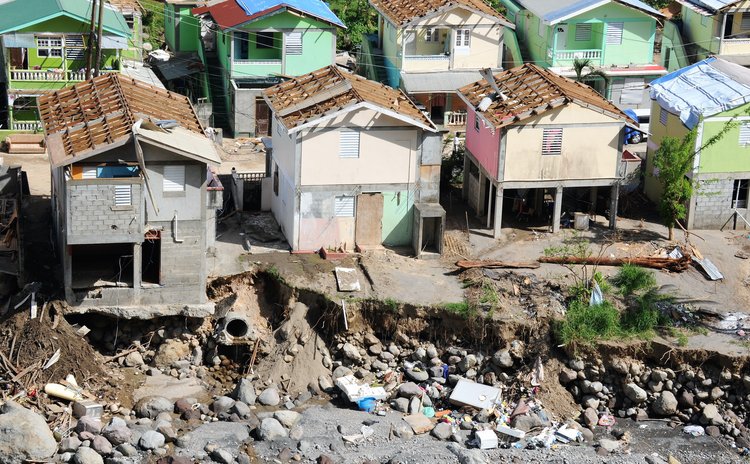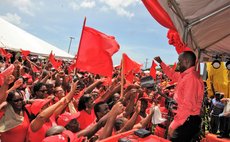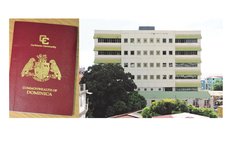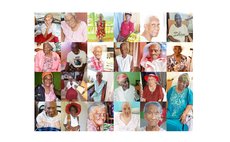More hurricanes like Dorian are coming our way: What are we doing about that?

As Dominicans prepare to observe the second anniversary of Hurricane Maria, the category-five storm that devastated the island on 18th September 2017, the people of the Bahamas are just waking up from the nightmare that was Hurricane Dorian, another category five hurricane.
The death toll from the battering of the Bahamas now stands at 50 but that number is expected to rise to hundreds if not thousands. But besides the death and disappearance of thousands of persons, Dorian has decimated a large part of that multi-island tourist paradise that we know as the Bahamas.
If you recall Dorian past Dominica as a tropical depression but made landfall in the Bahamas as an extremely dangerous category-five hurricane packing winds of more than 185 miles per hour.
What is significant is that Dorian came to the Bahamas and just stayed there for about 40 hours non-stop completely destroying the islands of Grand Bahama and Great Abaco.
Imagine the level of destruction Maria would have done to Dominica if it had stayed over the island for that long.
But most significantly, scientists are now suggesting that there is the possibility that other category five hurricanes could stall over any island of the Caribbean in the not-too-distant future. This is very scary. Weather scientists in the United States say that this is the fourth straight year in which category five hurricanes have formed in the Atlantic. Dorian is the first to stay over an island, without moving forward, for nearly two days.
So, leaders of the Caribbean Community (CARICOM) must get their act together and put into action, as a matter of urgency, ways and means to enhance disaster risk management so that countries could repair homes and bridges and the economy and the very lives of inhabitants. Climate change is real, there is no escape.
This week as Dominicans remember the horrors of Hurricane Maria they should also become wearier of pre-election propaganda that Dominica has somehow recovered completely from Maria. Nothing is further from the truth.
The truth is recovery, real recovery, will take consistent and persistent action for many decades. We argue that Dominica has not completely recovered from the ravages of category five Hurricane David four decades ago, especially from the mass exodus immediately after the storm.
And our view that there will be more Dorian-type hurricanes to come is backed by solid science. For example in a study published in the journal, Climate and Atmospheric Science, in June, NASA scientist Tim Hall found that North Atlantic hurricanes have slowed about 17 % since 1944; annual coastal rainfall averages from hurricanes increased by about 40 % over the same period. A 2018 paper found that tropical cyclones worldwide have slowed significantly.
Understandably Dominicans are scared of the annual hurricane season because they have not recovered, physically or psychologically, from the battering they received from Maria or even Hurricane David. Of course, the best way to survive these increasingly frequent and more devastating natural disasters, made worse by the phenomenon of climate change, is to prepare like we have never prepared before.
For Dominicans the 2019 and 2020 hurricane seasons will be especially painful because we have not had the opportunity to build back better, as government's slogan suggests. Don't fool yourselves, rebuilding after Maria has not been as easy as we have been led to believe. Dominica, like Puerto Rico, is still a major hurricane-battered country. Many parts of the island, where the poorest of the poor live, are still without essential services and that condition, for a large number of Dominicans, could continue for many years.
Over the last decade hurricanes damaged the agriculture and tourism sectors, in particular, but given our experience over the years, the most dramatic being Hurricane David and 1979, TS Erica in 2015 and Maria in 2017, one would expect Dominica to be much better prepared for the impact of hurricanes and other natural disasters.
For instance, how many farmers all over the island have built storm drains, planted grass barriers, protected their farm buildings; how many " real" hurricane shelters has the Government built; how many villages on the coast-from Scotts Head to Capuchin- have built protection against deadly storm surge; how many of our buildings have been reinsured; how many millions of dollars has government saved for emergency recovery after a storm; how much has the private sector prepared to avoid looting and how much planning has gone into bringing the people of this divided country together, to fight natural disasters together, to build the extremely battered economy together. If we don't build our country together, we will have a great fall like Humpty-Dumpty- together.
So we wonder whether the government will continue to repeat the absolute fiction that Dominica is back to normal after the devastation inflicted by Maria two years ago. What really is normal?
How can we be back to normal when hundreds of houses are still roofless and hundreds of inhabitants are without essential services, when the majority of roads and bridges are extremely dangerous to motorists, when thousands of able- bodied Dominican women and men have migrated, when small and micro businesses are still trying to wake up after the Maria nightmare, when the productive sectors of agriculture, tourism and manufacturing are still struggling to get going again. Things are not yet back to normal. Not by a long shot.




